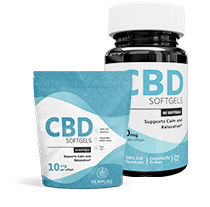Navigating the Path to Wellness: A Comprehensive Guide to the Elimination Diet
Sabina King on Feb 12th 2024
Embarking on a journey toward better health often involves a careful examination of one's diet and lifestyle. The elimination diet has emerged as a powerful tool for those seeking to identify and manage various health concerns. In this comprehensive guide, we will delve into the intricacies of the elimination diet, its potential benefits, and how it can be a pivotal step on the path to wellness.
Understanding the Basics: What is an Elimination Diet?
An elimination diet is a systematic approach to identifying and eliminating specific foods from one's diet that may be causing adverse reactions or symptoms. This process allows individuals to pinpoint the culprits behind issues such as digestive discomfort, migraines, inflammation, and more. The ultimate goal is to create a baseline diet and systematically reintroduce eliminated foods to observe their impact on the body.
How to Start an Elimination Diet: A Step-by-Step Approach
Embarking on an elimination diet requires careful planning and dedication. Begin by creating a list of common trigger foods associated with your specific health concerns. To aid in this process, consider consulting with a healthcare professional or a registered dietitian who can provide personalized guidance.
Compile Your Elimination Diet Food List:
Start by identifying foods commonly associated with allergies, sensitivities, or intolerances. This may include common allergens such as dairy, gluten, soy, and nuts. Your healthcare professional can help tailor the list to your specific health goals.
Plan Your Meals:
Design a meal plan that adheres to the elimination diet guidelines. Opt for whole, unprocessed foods to ensure accurate observations during the elimination phase. Be vigilant in reading labels, as hidden ingredients may be present in packaged foods.
Elimination Phase:
Strictly adhere to your elimination diet for a predetermined period, typically 2 to 6 weeks. During this time, monitor your symptoms and keep a detailed food diary to track any changes in your health.
Reintroducing Foods After an Elimination Diet: A Delicate Process
After successfully completing the elimination phase, the reintroduction of eliminated foods is a critical step. This should be done systematically, introducing one food at a time and observing for any adverse reactions. Keep in mind that some reactions may be delayed, so patience is key. Consult with your healthcare professional to interpret your observations and determine a sustainable long-term diet.
Specific Elimination Diets for Targeted Health Concerns
FODMAP Elimination Diet:
This diet targets fermentable carbohydrates that can contribute to digestive issues, particularly for individuals with irritable bowel syndrome (IBS). Common high-FODMAP foods include certain fruits, vegetables, and grains.
IBS Elimination Diet:
Tailored to individuals with IBS, this diet may involve eliminating specific trigger foods identified through symptom tracking and healthcare professional guidance.
Breastfeeding Elimination Diet:
For breastfeeding mothers, an elimination diet can be crucial in identifying foods that may cause discomfort or adverse reactions in their infants through breast milk.
Migraine Elimination Diet:
Some migraines may be triggered by specific foods. An elimination diet can help identify and manage these triggers, potentially reducing the frequency and severity of migraines.
Inflammation Elimination Diet:
Chronic inflammation is linked to various health issues. An elimination diet focused on anti-inflammatory foods may help manage inflammation and promote overall well-being.
Legal Disclaimer:
Before embarking on any elimination diet, it is essential to consult with a qualified healthcare professional or a registered dietitian. The information provided in this article is for informational purposes only and should not be considered as medical advice. Hempure CBD recommends that individuals seek personalized guidance to ensure that an elimination diet aligns with their specific health needs.
In conclusion, the elimination diet can serve as a valuable tool on your journey to improved health. By understanding the basics, carefully planning your approach, and seeking professional guidance, you can navigate this path to wellness with confidence. As you explore the potential benefits of an elimination diet, consider incorporating other lifestyle choices, such as incorporating high-quality, THC-free broad-spectrum CBD products from Hempure CBD, to support your overall well-being.














